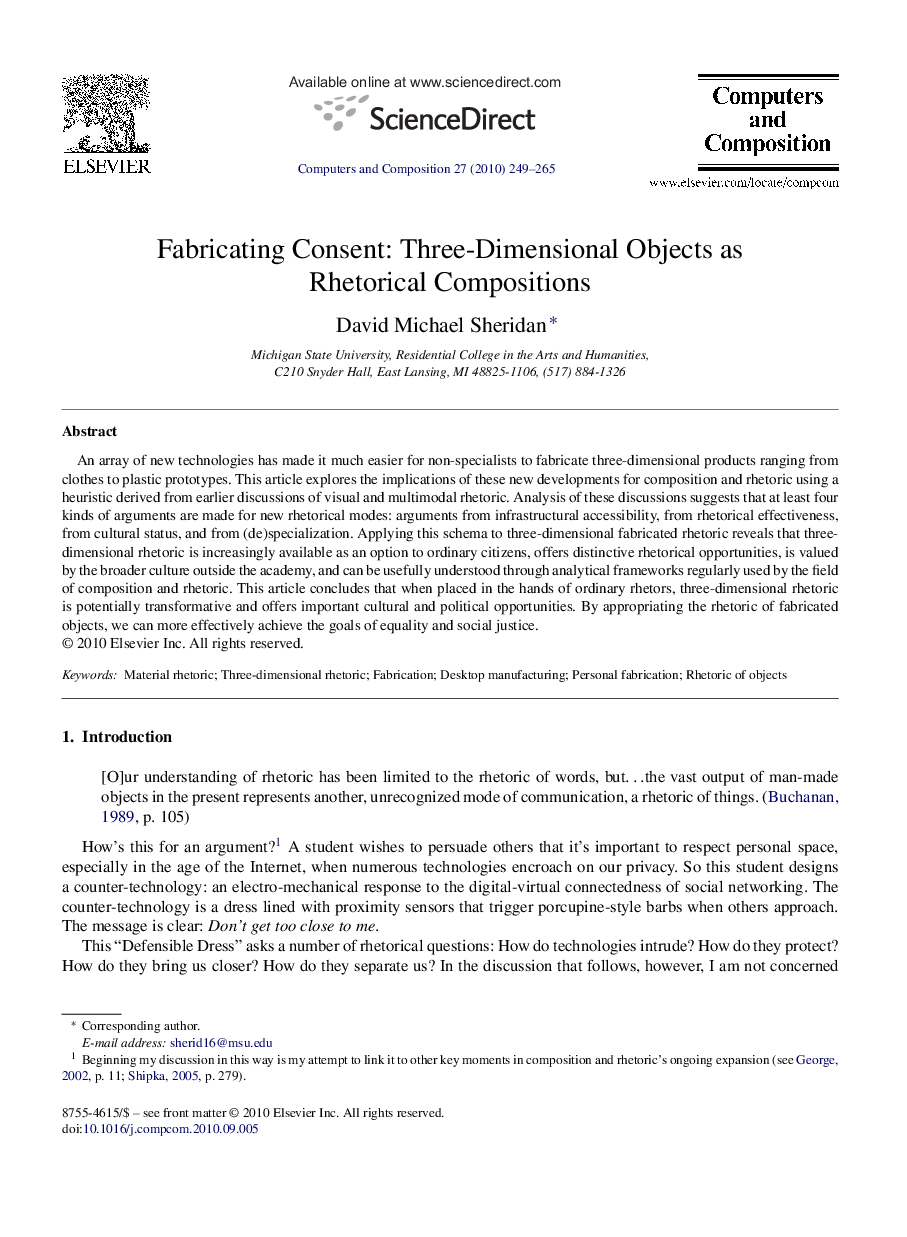| Article ID | Journal | Published Year | Pages | File Type |
|---|---|---|---|---|
| 347842 | Computers and Composition | 2010 | 17 Pages |
An array of new technologies has made it much easier for non-specialists to fabricate three-dimensional products ranging from clothes to plastic prototypes. This article explores the implications of these new developments for composition and rhetoric using a heuristic derived from earlier discussions of visual and multimodal rhetoric. Analysis of these discussions suggests that at least four kinds of arguments are made for new rhetorical modes: arguments from infrastructural accessibility, from rhetorical effectiveness, from cultural status, and from (de)specialization. Applying this schema to three-dimensional fabricated rhetoric reveals that three-dimensional rhetoric is increasingly available as an option to ordinary citizens, offers distinctive rhetorical opportunities, is valued by the broader culture outside the academy, and can be usefully understood through analytical frameworks regularly used by the field of composition and rhetoric. This article concludes that when placed in the hands of ordinary rhetors, three-dimensional rhetoric is potentially transformative and offers important cultural and political opportunities. By appropriating the rhetoric of fabricated objects, we can more effectively achieve the goals of equality and social justice.
